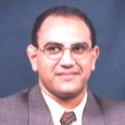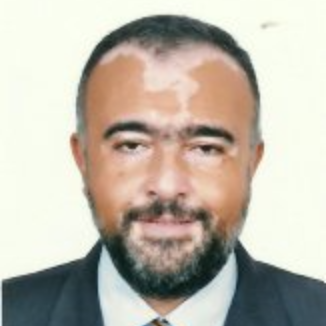International Journal of Intelligent Systems and Applications (IJISA)
IJISA Vol. 5, No. 8, 8 Jul. 2013
Cover page and Table of Contents: PDF (size: 491KB)
PSO-Based PI Controller for Shunt APF in Distribution Network of Multi Harmonic Sources
Full Text (PDF, 491KB), PP.54-66
Views: 0 Downloads: 0
Author(s)
Index Terms
Active Power Filter, PSO Algorithm, PI Controller, Harmonics Suppression, Power Quality
Abstract
PI controller tuning with the assumption of linear PWM model leads to unsatisfactory results under varying operating conditions. Optimal tuning of PI gains is required to get the best response of PI controllers. This paper presents a new method for harmonic suppression using particle swarm optimization (PSO) based PI controller (PSOPI) to estimate an efficient shunt active power filter (SAPF). The proposed filter is tested on a 13 bus industrial distribution system. The study system with the 18 study cases are simulated through MATLAB Simulink with different loading condition and single and multi harmonic sources. The results of applying the PIPSO controller are compared with those out of a double proportional controller (DPC). The obtained results ensure the effectiveness of the proposed filter and its superiority in reducing harmonics.
Cite This Paper
Wael M. Elmamlouk, Hossam E. Mostafa, Metwally A. El-Sharkawy, "PSO-Based PI Controller for Shunt APF in Distribution Network of Multi Harmonic Sources", International Journal of Intelligent Systems and Applications(IJISA), vol.5, no.8, pp.54-66, 2013. DOI:10.5815/ijisa.2013.08.07
Reference
[1]Zainal Salam, Tan Perng Cheng and Awang Jusoh “Harmonics Mitigation Using Active Power Filter: A Technological Review” Faculty of Electrical Engineering Universiti Teknologi Malaysia, VOL. 8, NO. 2, 2006, 17-26.
[2]Djaffar Ould Abdeslam, Patrice Wira, Jean Mercklé, Damien Flieller, and Yves-André Chapuis “A Unified Artificial Neural Network Architecture for Active Power Filters” IEEE Transactions on Industrial Electronics, Vol. 54, Issue 1, pp. 61-76, February 2007
[3]Z. Lu, T. Y. Ji, W. H. Tang and Q. H. Wu “Optimal Harmonic Estimation Using A Particle Swarm Optimizer” IEEE Transactions on Power Delivery, Vol. 23, No. 2, pp. 1166-1174, April 2008.
[4]W.M. El-Mamlouk, M.A. El-Sharkawy, H. E. Mostafa, “Testing the Accuracy of ML-ANN for Harmonic Estimation in Balanced Industrial Distribution Power System” Proceeding of the (WASET) World Academy of Science, Engineering and Technology Conference ( International Conference on Computer, Electrical, and Systems Science, and Engineering ) Amsterdam, Netherlands, September 23-25, 2009.
[5]N. Gupta, S.P. Singh, and S.P. Dubey “Fuzzy Logic Controlled Shunt Active Power Filter for Reactive Power Compensation and Harmonic Elimination” 2nd international conference on computer & communication technology (ICCCT), pp. 82-87, 2011.
[6]M. Jha, and S.P. Dubey “Neuro-Fuzzy Based Controller for a Shunt Active Power Filter” International conference on power and energy (ICPE), pp. 1-7, 2011
[7]S.S. Patnaik, and A.K. Panda “Optimal Load Compensation by 3-phase 4-wire Shunt Active Power Filter Under Distortion Mains Supply Employing Bacterial Foraging Optimization” Annual IEEE India conference (INDICON), pp. 1-6, 2011.
[8]Boluo Xie “Artificial Neural Network Based Scheme for Voltage and Harmonic Compensation” Ph.D. University of Newfoundland, Canada, December 2006.
[9]W.M. El-Mamlouk, M.A. El-Sharkawy, H. E. Mostafa, “Active Power Filter Controller for Harmonic Suppression in Industrial Distribution System” Ain Shams Engineering Journal, Vol. 2, No. 3-4, pp. 161-172, Sept.- Dec. 2011.
[10]X. Yu, X. Xiong, Y. Wu “A PSO-Based Approach to Optimal Capacitor Placement With Harmonic Distortion Consideration” Electric Power Systems Research, Vol. 71, pp. 27-33, 2004.
[11]J. Kennedy and R. Eberhart, “Swarm Intelligence”, Book, Morgan Kaufmann Publishers, 2001.
[12]B. Birge, “PSOt - a particle swarm optimization toolbox for use with Matlab” Proceedings of the IEEE Swarm Intelligence Symposium, pp. 182-186, April 2003.
[13]Task Force on Harmonic Modeling and Simulation, Transmission & Distribution Committee IEEE Power Engineering Society" Test Systems for Harmonics Modeling and Simulation", IEEE Transactions on Power Delivery, Vol. 14, No. 2, pp. 579-587, April 1999.
[14]Transmission & Distribution Committee IEEE Power Engineering Society, "Test Systems for Harmonics Modeling and Simulation", IEEE Transactions on Power Delivery, Vol. 14, No. 2, April 1999.
[15]W.M. El-Mamlouk, M.A. El-Sharkawy, H. E. Mostafa, “Harmonic Currents Circulation in Electrical Networks Simulation and Analysis”, 9th IASTED Eurobean conference on Power and Energy Systems, EuroPES 2009, Palma de Mallorca, Spain, pp 67-72, 7-9 Sept., 2009.
[16]Task Force on Harmonics Modeling and Simulation, “Modeling and Simulation of the Propagation of Harmonics in Electric Power Networks”, IEEE Trans. on Power Delivery, Vol 11, No. 1, pp. 452-465, January 1996.
[17]IEEE Standard 519-1992, "IEEE recommended practice and requirements for harmonic control in electrical power systems", IEEE Industry Applications Society/Power Engineering Society, April 12, 1993

